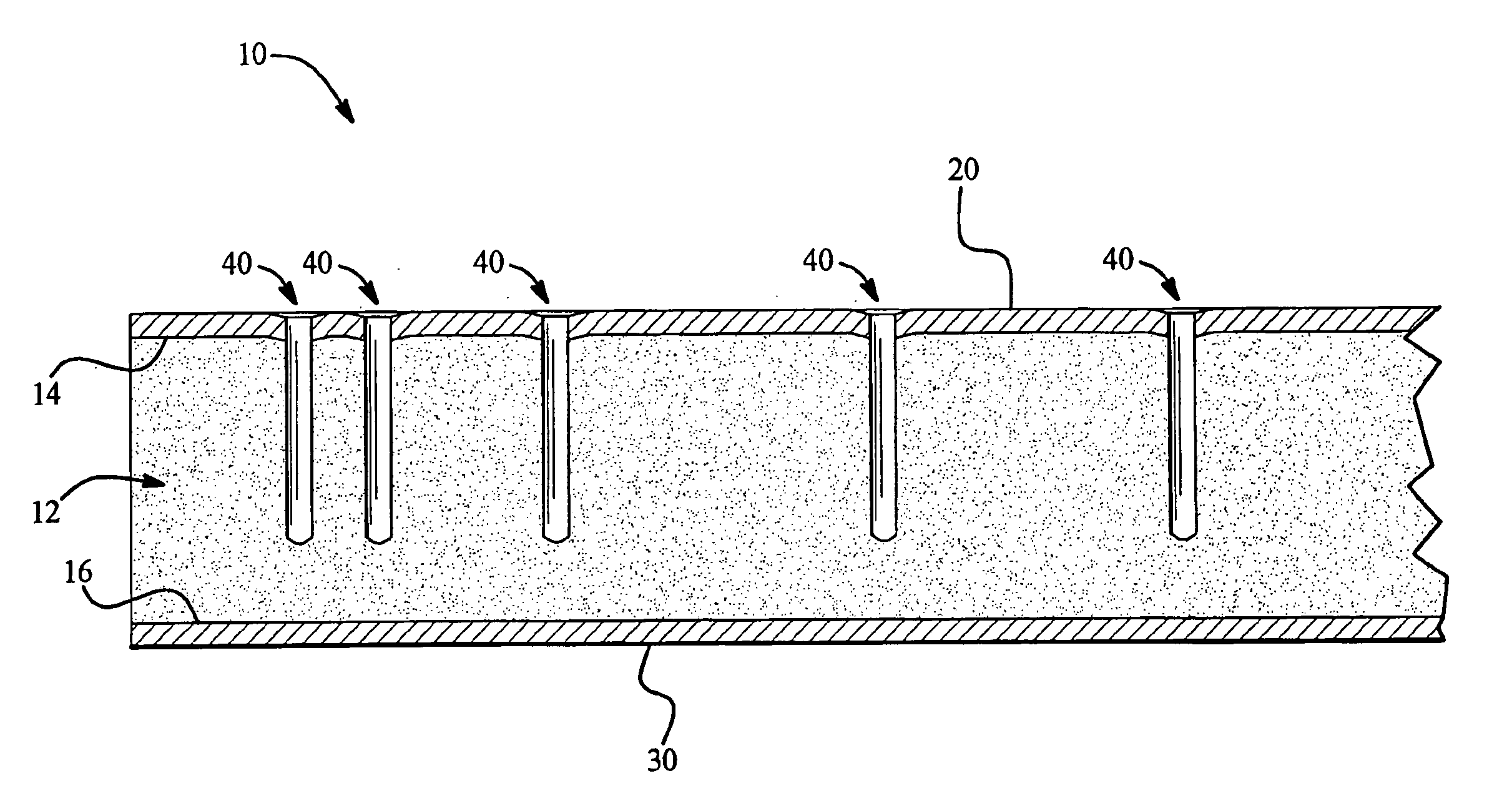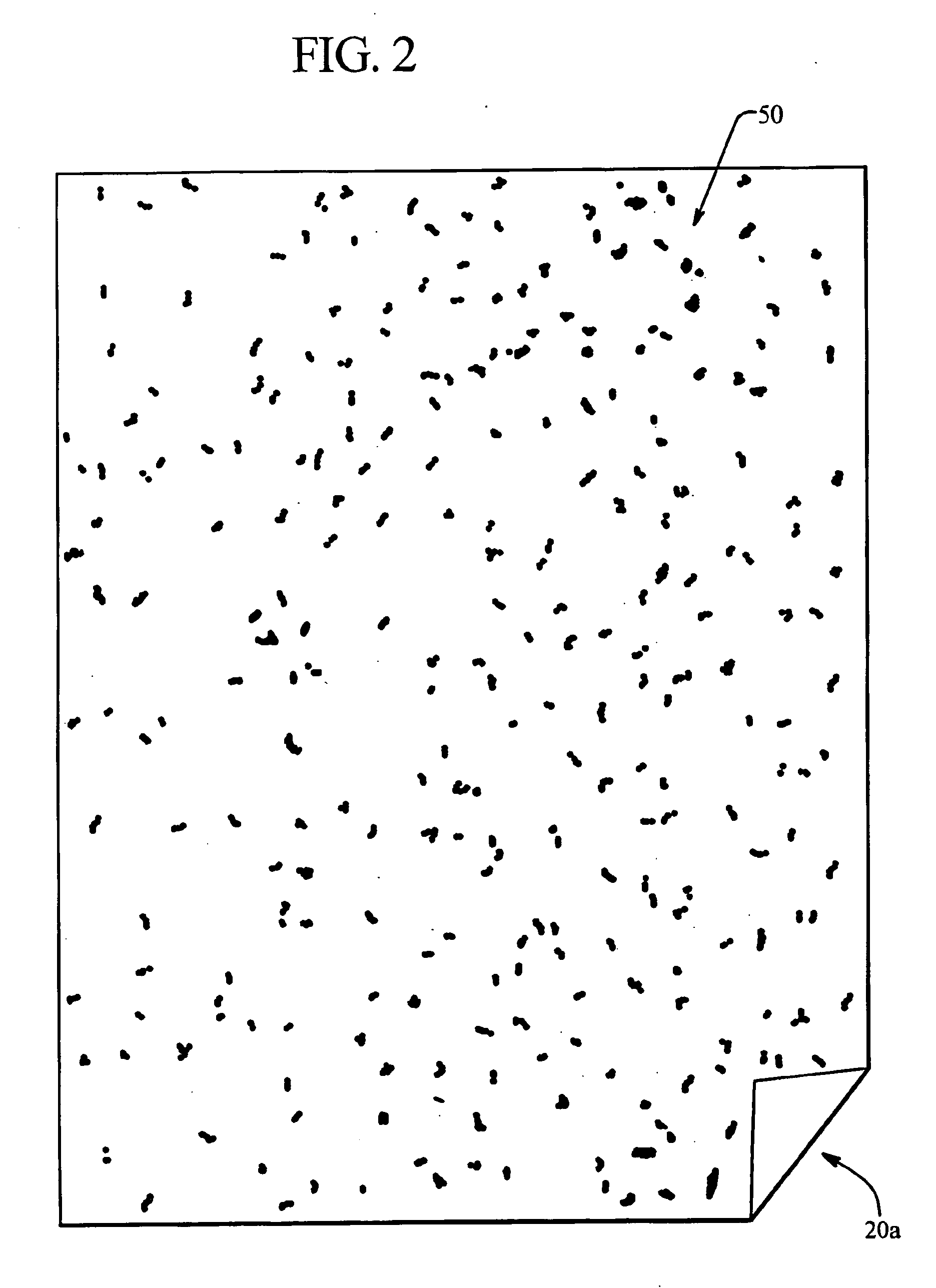Acoustical gypsum board for ceiling panel
a technology of gypsum board and ceiling panel, which is applied in the field of light weight gypsum board, can solve the problems of large water and energy consumption, poor sound absorption performance, and inconvenient preparation of water felting and tray casting techniques for preparing acoustical panels, etc., and achieves the effects of low cost of production, high sound absorption performance, and high production efficiency
- Summary
- Abstract
- Description
- Claims
- Application Information
AI Technical Summary
Problems solved by technology
Method used
Image
Examples
example 1a
[0049] Preparation of Low density acoustical gypsum board
[0050] Sample low density acoustical gypsum boards were prepared by a casting process in accordance with U.S. Pat. No. 5,922,447 using the core formulations of Table 1 with a high density soap foam (e.g. 10 pcf) incorporated into slurry of the core formulation.
example 1b
[0051] Preparation of Low density acoustical gypsum board by a continuous process
[0052] Sample low density acoustical gypsum boards were prepared by a continuous process in accordance with U.S. Pat. No. 6,342,284 to Yu et al. and U.S. Pat. No. 6,632,550 to Yu et al., herein incorporated by reference. This includes the separate generation of a high density foam (e.g. 10 pcf) and introduction of the foam into the slurry of the other ingredients as described in Example 5 of these patents.
example 2
[0053] Low density acoustical gypsum board—assessment of paper fibers and high density foam
[0054] Step 1. The following core formulations were prepared as an aqueous slurry as shown in Table 2.
TABLE 2Slurry formula:BoardBoardBoardBoardFormula 1Formula 2Formula 3Formula 4(weight %(weight %(weight %(weight %Componentsolids)solids)solids)solids)Stucco85.685.685.685.6Perlite5.05.05.05.0Dry paper fiber7.43.71.90Wet paper fiber03.75.67.4Total paper fiber7.47.47.47.4Starch2.02.02.02.0Water / solids ratio2.52.72.42.7
Dry paper fiber: fiberized gypsum wallboard paper
Wet paper fiber: hydropulped waste paper
Additives were included in addition to the above total solids: accelerator (HRA or CSA) at 0.5% by weight based on total solids; dispersant at 0.1% by weight based on total solids; and sodium trimetaphosphate at 0.1% by weight based on total solids.
[0055] Soap foam for each formulation sample was prepared as follows. Soap (2.0 g), available as product FA 403-Agent X-2332 from Stepan Chem...
PUM
| Property | Measurement | Unit |
|---|---|---|
| density | aaaaa | aaaaa |
| diameter | aaaaa | aaaaa |
| thick | aaaaa | aaaaa |
Abstract
Description
Claims
Application Information
 Login to View More
Login to View More - R&D
- Intellectual Property
- Life Sciences
- Materials
- Tech Scout
- Unparalleled Data Quality
- Higher Quality Content
- 60% Fewer Hallucinations
Browse by: Latest US Patents, China's latest patents, Technical Efficacy Thesaurus, Application Domain, Technology Topic, Popular Technical Reports.
© 2025 PatSnap. All rights reserved.Legal|Privacy policy|Modern Slavery Act Transparency Statement|Sitemap|About US| Contact US: help@patsnap.com



